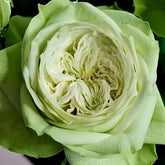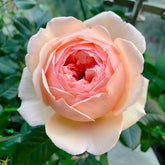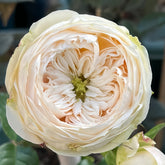Roses and Cats: Are Roses Toxic to Your Feline Friend? A Gardener’s Guide
by
SmithZoe
23 Oct 2025
As a rose lover who also adores cats, one question often lingers: How do roses and cats coexist safely? Many pet owners worry if roses pose a threat to their furry companions, and it’s a valid concern—cats are curious creatures who love to nibble, sniff, or even play with garden plants. In this guide, we’ll break down the truth about roses and cats, including potential risks, symptoms to watch for, and how to keep both your roses and cats happy and healthy.
Are Roses Toxic to Cats? The Straight Answer
Let’s start with the key question: Are roses poisonous to cats? The good news is that roses are not classified as toxic to cats—they’re not on the list of highly dangerous plants for felines, unlike lilies (which are extremely toxic). However, this doesn’t mean roses are entirely harmless to cats. Certain parts of the rose plant can cause mild discomfort if your cat ingests or comes into contact with them, making it important to understand the nuances of roses and cats safety.
Potential Risks of Roses for Cats
While roses aren’t toxic, here are the main concerns when it comes to roses and cats:
1. Gastrointestinal Irritation from Flowers/Petals
If your cat nibbles on rose flowers or petals, they may experience mild gastrointestinal upset. This is because rose petals contain natural compounds that can irritate a cat’s sensitive digestive system. Symptoms to look for include:
- Vomiting
- Diarrhea
- Loss of appetite
- Lethargy (tiredness)
These symptoms are usually mild and short-lived, but they’re still unpleasant for your cat—so it’s best to discourage them from eating rose blooms.
2. Skin or Oral Irritation from Leaves/Fruits
Rose leaves and fruits (rose hips) contain small amounts of compounds that can cause mild irritation. If your cat chews on leaves or rose hips, they might experience:
- Oral discomfort (drooling, pawing at the mouth)
- Mild skin redness or itching if they rub against leaves
Again, these reactions are rarely severe, but they’re a sign your cat should steer clear of these parts of the rose plant.
3. Thorn Injuries (A Hidden Risk for Roses and Cats)
While not related to toxicity, rose thorns are a practical hazard for curious cats. If your cat brushes up against rose bushes or tries to play with stems, thorns can prick their skin, paws, or even eyes. Thorn pricks can cause pain, swelling, or infection—so protecting your cat from thorns is just as important as worrying about toxicity when it comes to roses and cats.
How to Keep Roses and Cats Safe Together
You don’t have to choose between your beloved roses and your cat—follow these simple tips to foster harmony between roses and cats:
1. Discourage Chewing Behavior
- Place rose bushes in areas your cat can’t easily access (e.g., raised garden beds, fenced-off sections of the yard).
- If you bring cut roses indoors, keep them on high shelves or tables where your cat can’t reach.
- Use cat-safe deterrents (like citrus-scented sprays) on rose plants—cats dislike citrus smells and will likely avoid nibbling.
2. Protect Cats from Rose Thorns
- Plant roses in spots with plenty of space around them, so cats don’t accidentally brush against thorns while exploring.
- For indoor cut roses, remove any thorns from stems before placing them in a vase—this eliminates the risk of prick injuries.
- Consider growing thornless rose varieties (yes, they exist!) to minimize hazards for both you and your cat.
3. Monitor Your Cat Around Roses
Keep an eye on your cat when they’re near rose plants, especially if they’re young, playful, or known for nibbling plants. If you notice them showing interest in roses, gently redirect their attention to cat toys or cat-safe plants (like cat grass, catnip, or spider plants).
4. Know What to Do If Your Cat Gets Into Roses
If your cat ingests rose petals/leaves or gets pricked by a thorn:
- For ingestion: Monitor them for 24 hours. If mild symptoms (vomiting, diarrhea) persist or worsen, contact your vet.
- For thorn pricks: Clean the area with warm water and mild soap. If swelling, redness, or infection develops, seek veterinary care.
- In rare cases of severe reactions (e.g., difficulty breathing, severe drooling), call your vet immediately—even though roses aren’t toxic, individual cats may have unusual sensitivities.
Cat-Safe Alternatives to Roses (For Indoor Greenery)
If you want to add more plants to your home but want to avoid any risk to your cat, opt for these cat-safe options that won’t compete with your outdoor roses:
- Cat grass (easy to grow and safe for cats to nibble)
- Catnip (a favorite for most cats, completely non-toxic)
- Spider plants (hardy and safe for felines)
- Boston ferns (lush foliage that’s gentle on cats)
These plants let your cat satisfy their curiosity without putting them at risk—complementing your outdoor roses perfectly for a home that’s friendly to both roses and cats.
Final Thoughts on Roses and Cats
Roses and cats can coexist safely—roses aren’t toxic to cats, but they can cause mild discomfort or injuries if not handled with care. By taking simple precautions (discouraging chewing, protecting from thorns, monitoring interactions), you can enjoy your beautiful roses while keeping your feline friend safe and happy.
Remember: The key to harmony between roses and cats is awareness. Knowing the risks, taking preventive steps, and being prepared to act if needed ensures both your plants and your pet thrive. With a little planning, you can have a garden (and home) that’s welcoming to everyone—including your roses and your cat!














